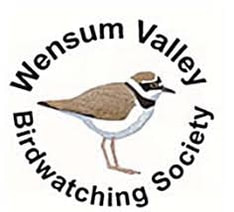|
Speaker: Jenny Donelan, BTO.
Reporter: Cath Robinson Jenny is a BTO Training Officer who as part of her job creates and delivers educational materials and training activities to help with Bird identification and BTO surveys. She had an infectious enthusiasm about her role in communication and only at the end of her presentation told us she had never done it in this form before!
0 Comments
Speaker: Patrick Barkham
Reporter: Sue Gale April brings the AGM, which can often seem a bit dry, but as usual the AGM business was dispatched in a few minutes and we moved on to one of the most entertaining talks we have enjoyed for a long time. ‘The Swimmer’ is the title of Patrick Barkham’s latest book – a biography of Roger Deakin who was an environmentalist among many other things and is credited with starting the current enthusiasm for wild swimming with his own book ‘Waterlog’. Indeed, the black Speedos he wore when swimming across Britain are to be found in the library at UEA! Speaker: Dominic Buscall
Reporter: Sue Gale Dominic Buscall, a founder of Wild Ken Hill, gave a very popular and well-received talk about what they do there and about some of their current projects. The farm has developed over the last 5 or 6 years, from its original state of 75% arable crops and 25% wood and wetland to the current 3 areas of land management. The challenges were to do something about worsening biodiversity, exacerbated by the climate crisis, and to do this in a financially viable way, made possible by support from Natural England and the new farm subsidies which mean that work for the environment can at last be paid for. The three areas at Wild Ken Hill are: 1. the rewilding area; 2. wetland and coastal scrub; and 3. farming using regenerative agriculture. Speaker: Gordon Hamnett
Reporter: Sue Gale Gordon Hamlett is the author of the much admired ‘Best Birdwatching Sites in the Scottish Highlands’ and this talk tells the story of its production. Gordon first visited the area in the late 1980s when he was thrilled to see his first Red Squirrels, Crested Tits and Ospreys. He started to write articles about the birds of the area for Birdwatch magazine, after which he was asked to write a book about where to see birds in the Highlands, to sit alongside similar volumes about Norfolk and Devon and Cornwall. Gordon discussed the problem issues in such an undertaking – he wanted to include creatures other than birds, and to embrace the history of the area as well as something about the many different habitats. Speaker: Mark Avery
Reporter: Sue Gale Mark Avery paid us a visit in January, and we were very pleased to welcome him – you can rely on Mark to make you think And we absolutely do not believe his claim that he isn’t often invited back! Mark is a naturalist, author, consultant and campaigner who admits to being ‘better’ at birds, mammals and butterflies than he is on plants and most invertebrates. He is co-founder with Chris Packham and Ruth Tingay of Wild Justice, but he was here to promote his new book “Reflections”, in which he considers the current state of nature and of nature conservation. He took us through the book chapter by chapter for the first half of the evening, and then after the break he invited questions/ discussion. The interest aroused can be judged by the fact that this session exceeded its allotted time and took us very close to kicking-out time. |
Please feel free to read through our reports from our monthly indoor / online meetings. Archives
May 2024
Categories |

 RSS Feed
RSS Feed
